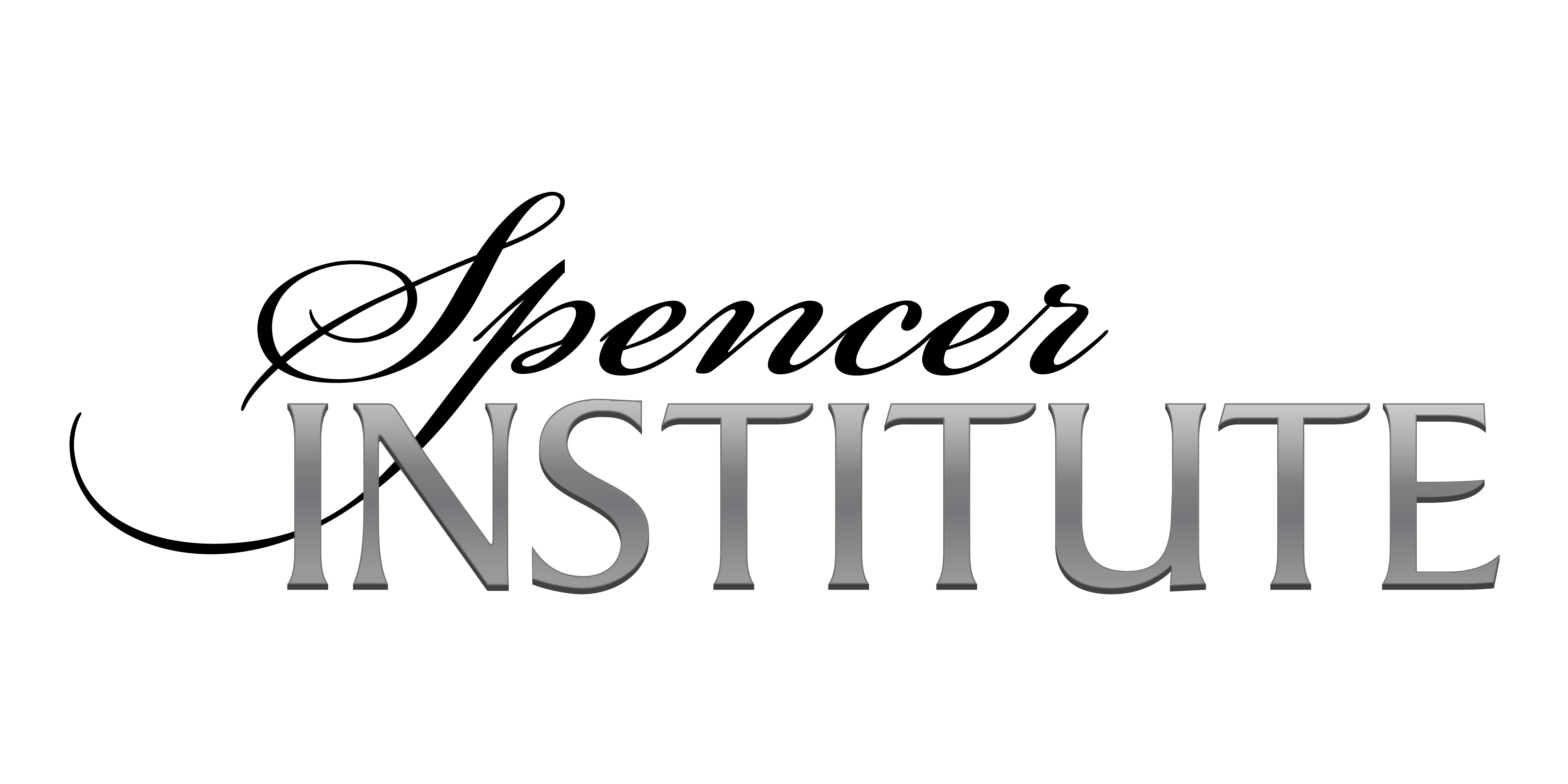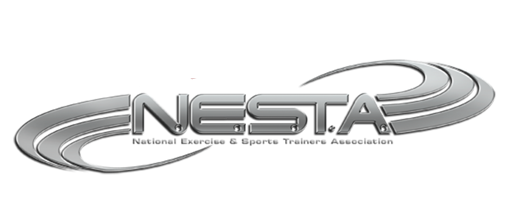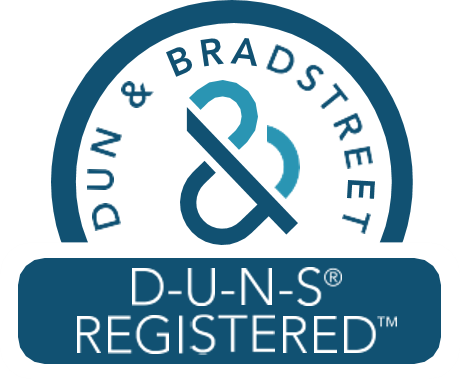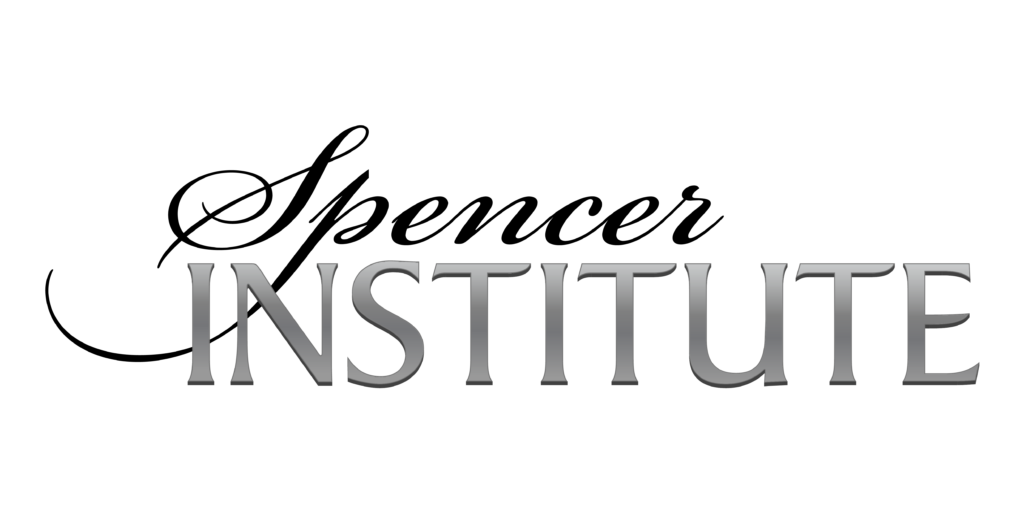Is the Food Pyramid Still Relevant?
What is the Food Pyramid?
The United States Department of Agriculture (USDA) created the food pyramid in 1992. It placed grains at the base of the pyramid, with veggies and fruits on the next largest tier. These were the foods that were supposed to comprise most of our diets. The next tier was split, with dairy on the left and proteins on the right. The tip of the pyramid was reserved for fats and sweets, with a recommendation to eat these sparingly.
The United States Department of Agriculture (USDA) develops new “dietary guidelines” every five years for Americans, in conjunction with the US Department of Health and Human Services (HHS). In 2011, the Food Guide Pyramid campaign (FGP) previously in use, was replaced by a new campaign – ChooseMyPlate.gov.
The first or original FGP was designed as a guide to educate the general public about what constitutes a healthful nutrition plan and became one of many definitive sources for dietary recommendations within the field of nutrition. The new ChooseMy- Plate.gov campaign has evolved to provide new ways to think about portion ratios and variety – and maybe even a healthy dose of controversy.
The new plate has five categories of food groups (with Protein also being the only macronutrient specified) arranged on a plate for spatial referencing.
The pyramid guidelines are just that. There will be times when the physical, mental, or even spiritual needs of your client go beyond the suggestions presented in the Food Guide Pyramid. But it is still a great tool to get a dialogue started with your client, regardless of where your client currently is.
Holistically Eating
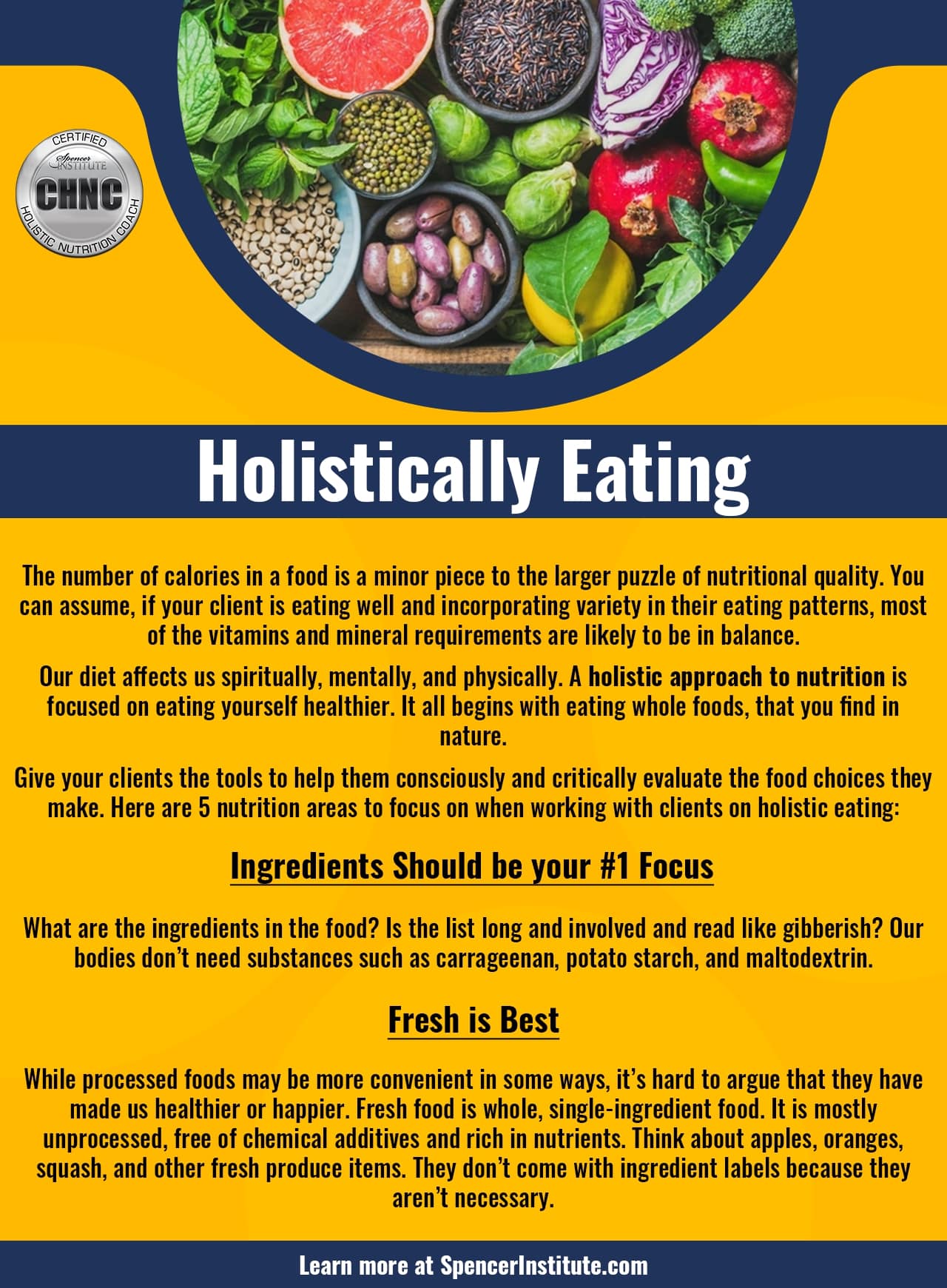
The number of calories in a food is a minor piece to the larger puzzle of nutritional quality. You can assume, if your client is eating well and incorporating variety in their eating patterns, most of the vitamins and mineral requirements are likely to be in balance.
Our diet affects us spiritually, mentally, and physically. A holistic approach to nutrition is focused on eating yourself healthier. It all begins with eating whole foods, that you find in nature.
Give your clients the tools to help them consciously and critically evaluate the food choices they make. Here are 5 nutrition areas to focus on when working with clients on holistic eating:
Ingredients Should be your #1 Focus
What are the ingredients in the food? Is the list long and involved and read like gibberish? Our bodies don’t need substances such as carrageenan, potato starch, and maltodextrin.
Fresh is Best
While processed foods may be more convenient in some ways, it’s hard to argue that they have made us healthier or happier. Fresh food is whole, single-ingredient food. It is mostly unprocessed, free of chemical additives and rich in nutrients. Think about apples, oranges, squash, and other fresh produce items. They don’t come with ingredient labels because they aren’t necessary.
Be on the Look for Secret Sugars
You can help your clients learn to identify hidden and added sugars in foods. This will help your clients understand how frequently they can find added sugar in common foods such as yogurt, marinara sauce, salad dressings, canned fruit, and cereals. Other names for sugar include barley malt, brown rice syrup, dextrose, dextrin, corn syrup solids.
Fat-Free isn’t Free of Trouble
When fat is removed from food, something has to take the place of the flavor that is loss. This usually comes in the form of sodium or sugar. The typical low-fat product is often high in carbs, might contain trans-fats and at the end of the day had a very similar calorie count to the original product.
Herbs and Spices are Fun
Herbs and spices are fantastic ingredients to add to a variety of recipes. If your clients fear a loss of flavor when trying to cook at eat moe continuously, you can introduce them to using different herbs and spices to enhance the flavor and nutrient profile of any dish they are preparing.
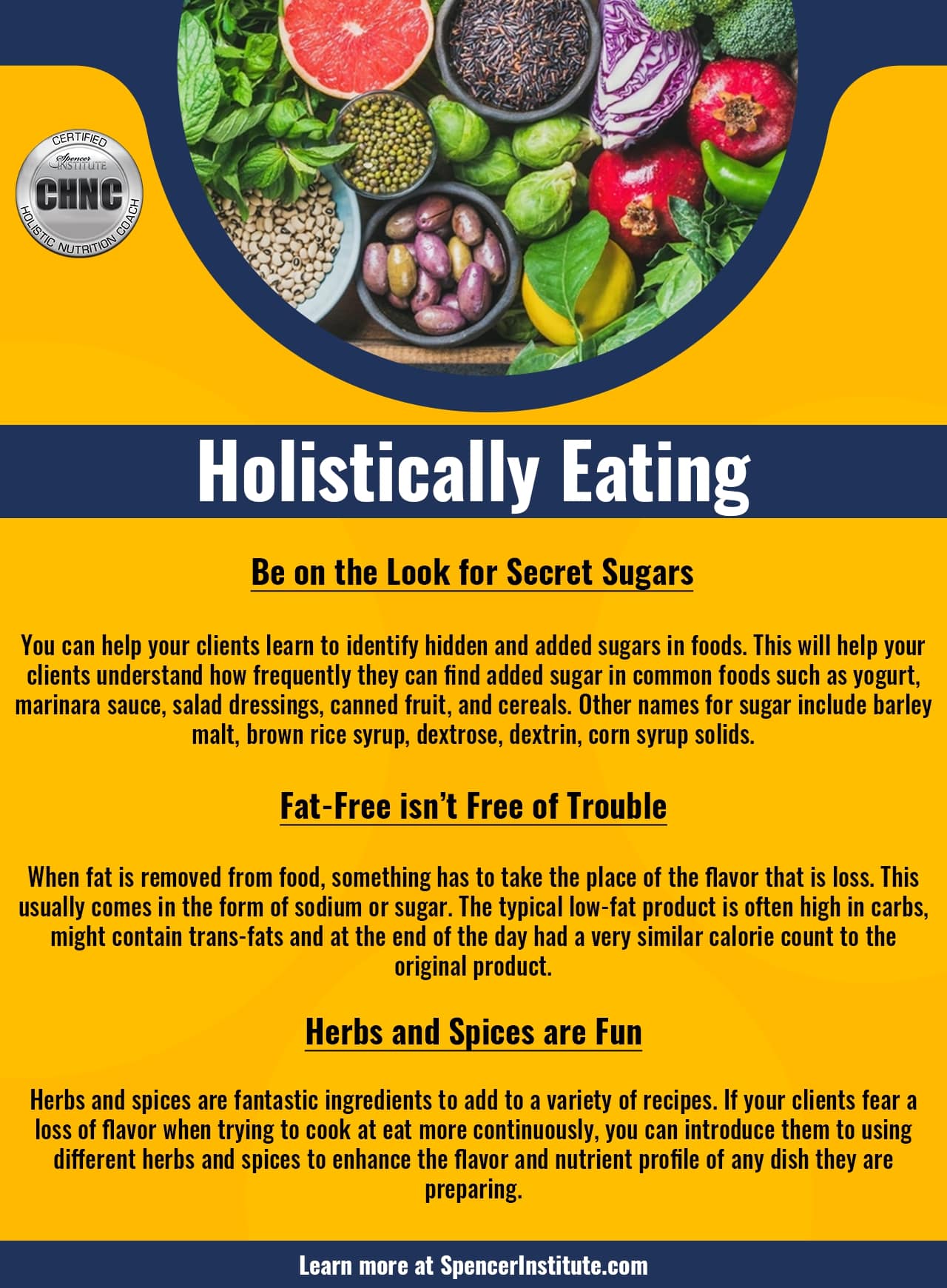
Getting Started
There isn’t one diet that works best for everyone — but we can all benefit from eating more whole, nutrient rich foods that we enjoy.
If you focus your work in the “holistic” areas of health, fitness and wellness, the Certified Holistic Nutrition Coach course is your next step. Without this knowledge and certification, you won’t have everything you need to help all your clients.
The stress of living during a pandemic has turned our daily lives and the lives of our clients and their families upside down. It comes at no surprise that most of your clients are concerned about their health and well-being during this time.
Our Stress Management coaching program is designed for life coaches, as well as fitness and wellness professionals who want to expand his or her knowledge in the lucrative and expanding field.
Spencer Institute certification programs are open to anyone with a desire to learn and help others. There are no prerequisites.
That’s it for now.
Take action!
PS: Click here to see many helpful business/career resources

